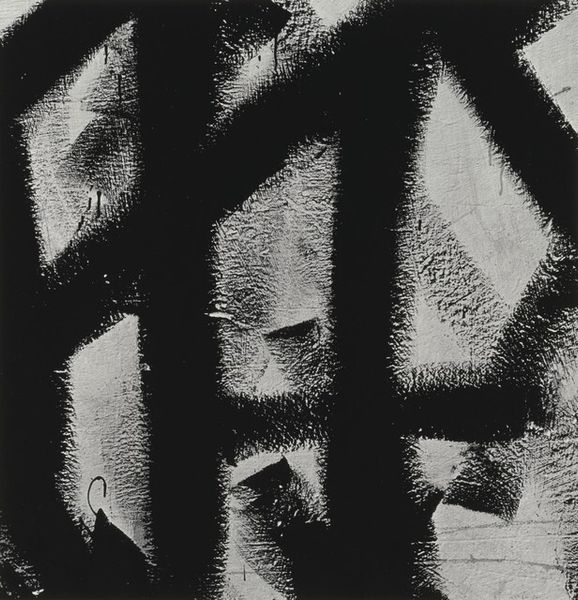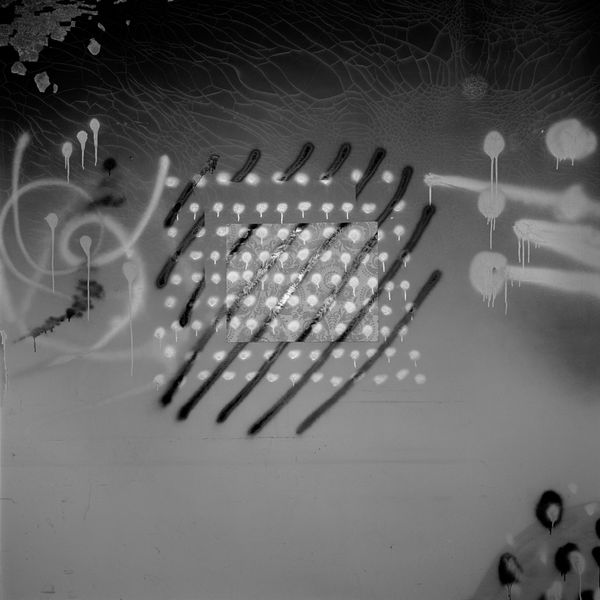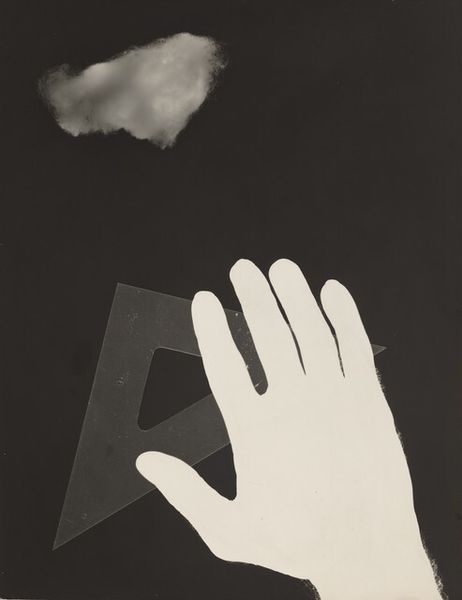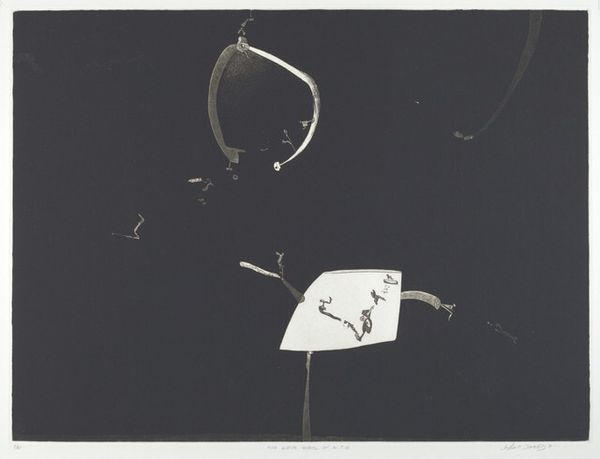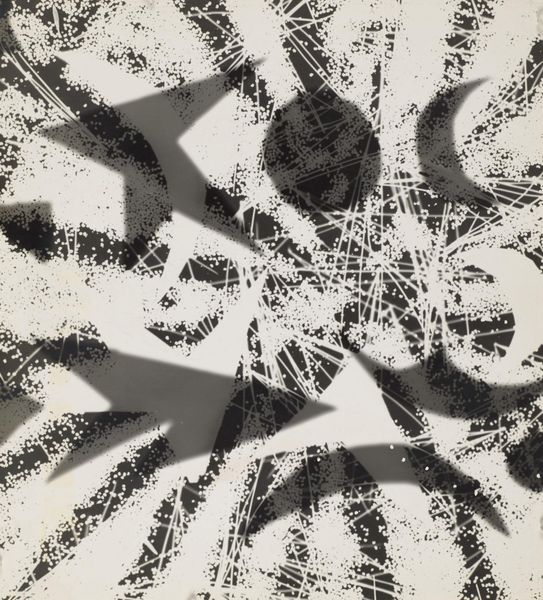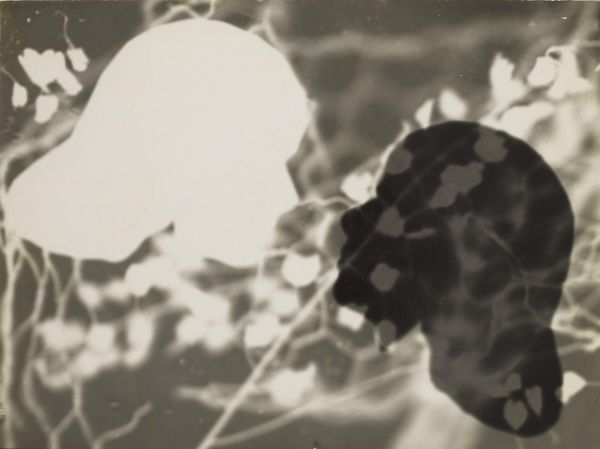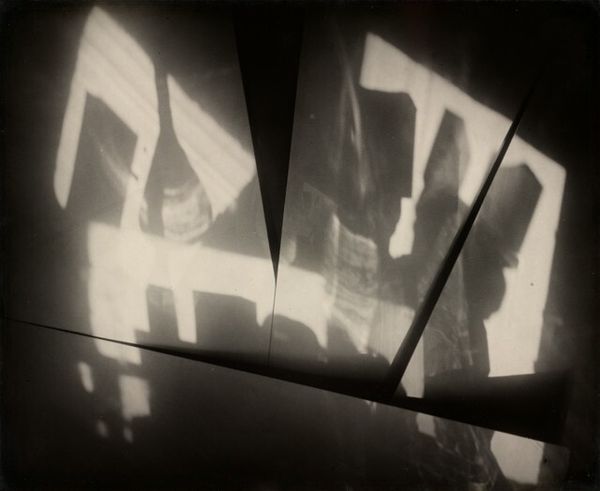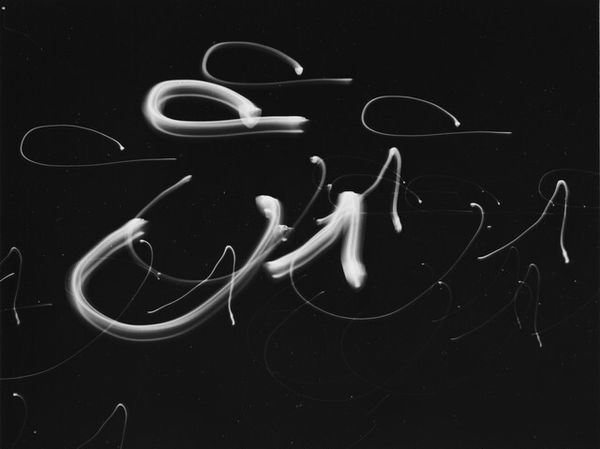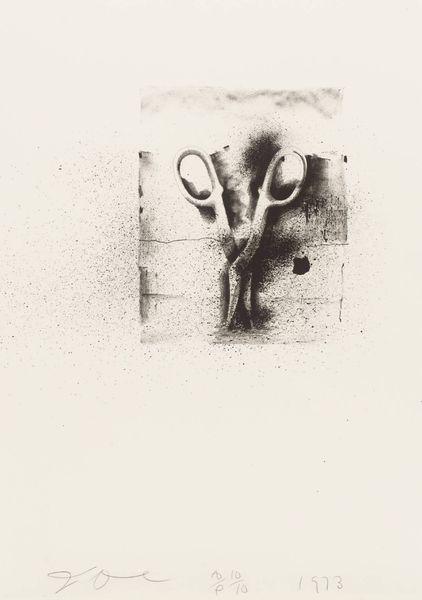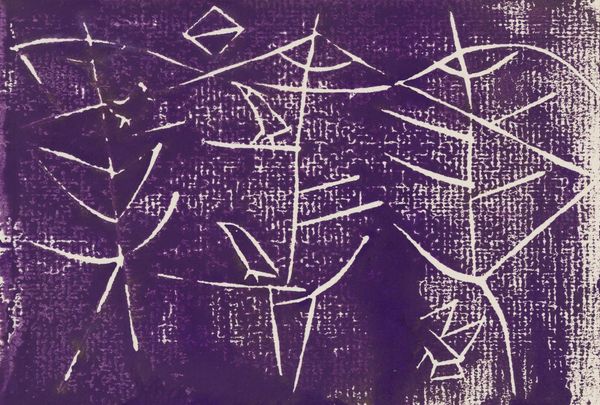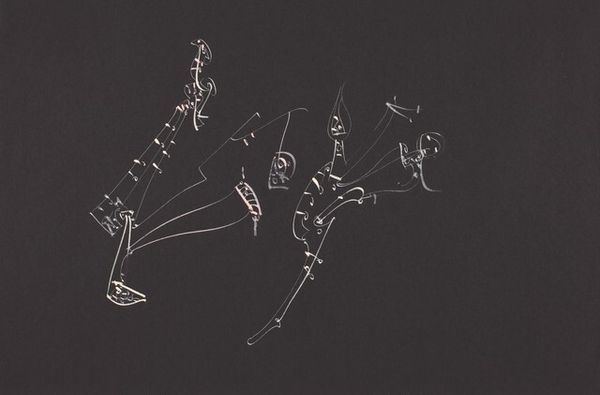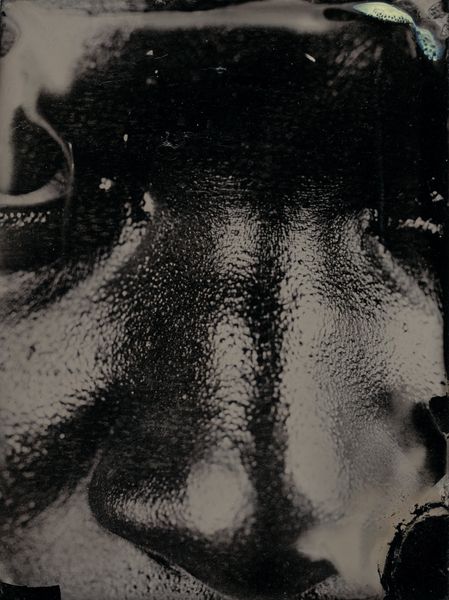
Dimensions: image: 17.8 × 21.9 cm (7 × 8 5/8 in.)
Copyright: National Gallery of Art: CC0 1.0
Curator: Let's turn our attention to this intriguing “Untitled” rayograph by Margaret De Patta, created in 1939. It's a fantastic example of her non-objective explorations. Editor: My first impression is how surprisingly delicate the composition feels. There's a spectral, almost ghostly quality to the arrangement of these geometric forms against the deep black. Curator: Precisely. As a rayograph, the work lacks a camera's mediating lens. The objects are placed directly onto the photographic paper and exposed to light. The effect is a transformation of the everyday into ethereal abstraction. Editor: And the arrangement itself—the dispersal of those tiny, almost 'U' shaped elements feels symbolic, scattered across the field. There’s something evocative of disintegration, maybe loss. It certainly echoes pre-war anxiety, wouldn't you say? Curator: I can see your point, yet I am primarily drawn to the interplay of the forms themselves. Notice the contrast between the hard-edged elements and the blurry, translucent mass to the left. This highlights a tension between clarity and ambiguity that's essential to the photograph’s visual language. The circular shape in the middle, like a spoked wheel almost, anchors it all. Editor: The wheel feels significant—a cog in a machine? A suggestion of industry overshadowed? And consider the fact that this was created on the cusp of World War II, using discarded mundane items that create new associations based on proximity, shape, and shadow... there is a looming anxiety! Curator: But De Patta was part of a West Coast avant-garde exploring abstraction for abstraction's sake. These object placements can act as signifiers of purely aesthetic meaning – challenging representational modes of vision, and that could also represent liberation. Editor: The interpretation then hinges on whether we view her abstraction as a retreat from, or an engagement with, the social and political landscape. Both are persuasively represented. Curator: Agreed. It seems these layers are precisely what makes De Patta's piece so captivating – it elicits diverse personal interpretations of an experimental process rooted in object and form. Editor: It invites contemplation, doesn’t it? Beyond immediate understanding to considering the broader currents of the period it was made.
Comments
No comments
Be the first to comment and join the conversation on the ultimate creative platform.

